Return to Montezuma
The Costa Rican village of Montezuma hasn't changed much in the past 25 years, and neither have I.
I first discovered Montezuma, Costa Rica, in the summer of 1996.
At the time, I was studying Spanish in the capital city of San Jose and staying with family in the suburb of Heredia. After finishing my courses, I had a couple of weeks to do some more traveling around the country before I had to head home.
I remember reading about Montezuma in my Lonely Planet guidebook. There was barely a mention of the place. While Jaco, Tamarindo, and Puerto Viejo had several pages each, Montezuma warranted little more than half a page. LP noted it for "good beaches, friendly residents" and said it was "very popular with gringos seeking affordable prices." It was also a little off-the-beaten path and an adventure to get to.
I was sold.
I dodged the thieves around Coca-Cola bus station in San Jose and hopped a bus to the coastal port town of Puntarenas. From there, it was a ferry ride across the Gulf of Nicoya and a bus ride along a bumpy, sloppy road. It was the rainy season, and it was slow going as the bus struggled to maintain traction in many areas.
Back then, Montezuma was even less developed and seemingly in the middle of nowhere. There were only a handful of buildings and one little street with a bunch of shirtless men spilling out of Chico's Bar. Reggaeton blasted from the place day and night, and locals bounced between surfing and hanging out in the back of the bar.
Not much happens in Montezuma. Aside from the buzz in the center of town, the only things you hear during the day are a cacophony of birds, barking dogs, and howler monkeys. Everything takes place within one little block and you see the same couple dozen people morning, afternoon, and night.
You can get around by motorbike, ATV, or horse. You can also walk down to the local soccer field to catch a street soccer match. There’s plenty of good surfing and an impressive waterfall about a mile outside town. Mostly, though, you chill, enjoy the ocean breezes, and soak up the Pura Vida.
While Montezuma has always been a gringo town, it has never been a tour group or resort-type of place. When I visited, I found backpackers, hippies, vagabonds, surfers, artists, and coastal weirdos. No one had any expectations. No one needed AC, and most visitors were just fine crashing on a hammock for the night. Many arrived by public bus or on the back of an ATV. People went to Montezuma solely for the vibe—to slow down and just live in the present.
Back in ‘96, I spent my time there drinking beer with locals and stray dogs, hiking, beachcombing, and watching sunsets. I ate $3.50 gallo pinto meals, drank $1 Imperial beers, and crashed every night for about $8. I had everything I needed in life for less than forty bucks a day.
I was only there for about a week, but time moved so slowly that it felt like a month.
One night, an awful storm rolled in, and about two dozen people pilled into a bar to watch the movie Beetlejuice. Few had shirts or shoes on, and everyone reeked of body odor because it was so hot and humid. Rain pelted the metal roof above us, drowning out the volume of the movie. As the winds kicked up and rain blew in from the sides,
we all moved closer to the center, becoming a giant mass of wet, sweaty Ticos, American and European gringos, dreadlocked surfers, and vagabonds. Everyone was packed skin to skin, blowing smoke, drinking, and laughing.
I downed more than half a bottle of Flor de Cana that night. I never quite figured out how I got back to my hammock, but I woke to the chatter of birds and the hooping of howler monkeys just outside the patio.
Montezuma captured a special place in my heart. Everyone eventually finds their own “place” in their travels. The kind of place you visit and everything speaks to your soul. I had traveled a bit before, but that summer in Costa Rica, and especially in Montezuma, awakened an adventurous wanderlust inside me that would never go away.
When I bid Montezuma farewell from a dirty bus window, I always knew I would be back.
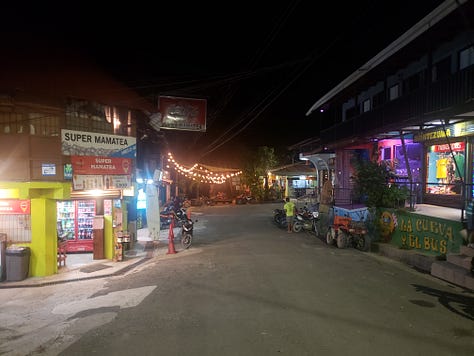
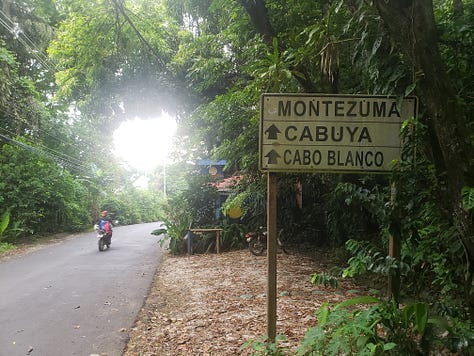
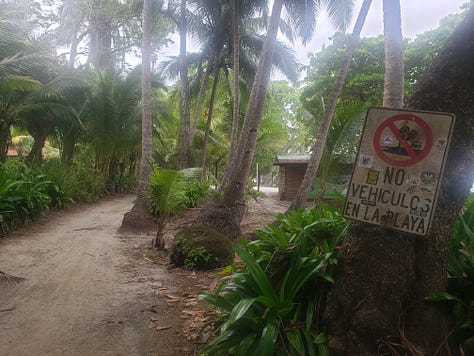
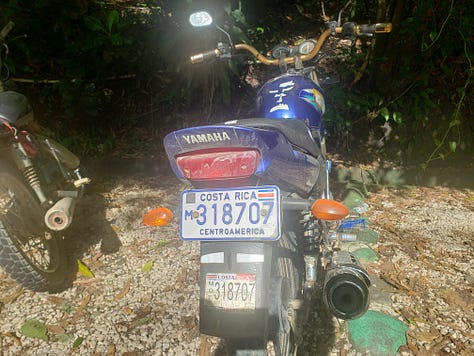
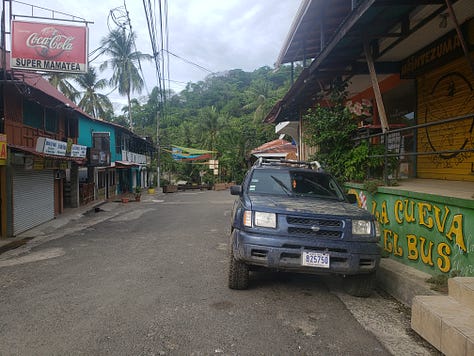
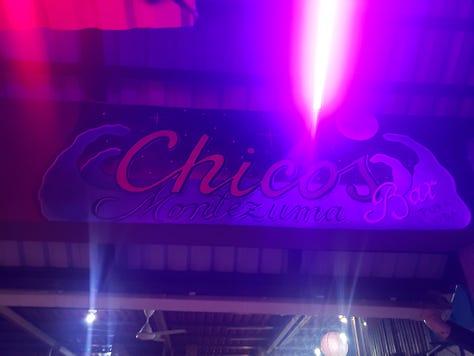
Twenty-five years later, in 2021, I made a trip back to Montezuma.
Surprisingly, little had changed. The road to get there was paved and you could even catch a speedboat to and from Jaco. There were a few new restaurants and a couple of boutique hotels in town. Credit cards were widely accepted, internet access was a hell of a lot better, and locals now had smartphones.
But while Montezuma had grown with the times, it retained its Pura Vida vibe and funky, off-the-beaten-path village charm. I found a quiet community that still had the character I had experienced 25 years before.
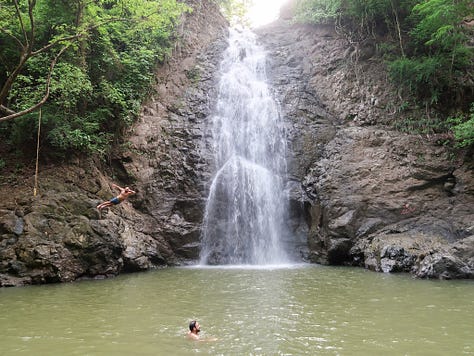
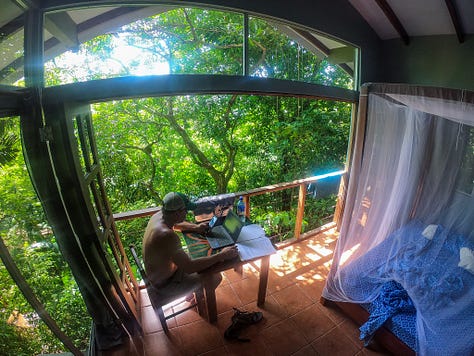
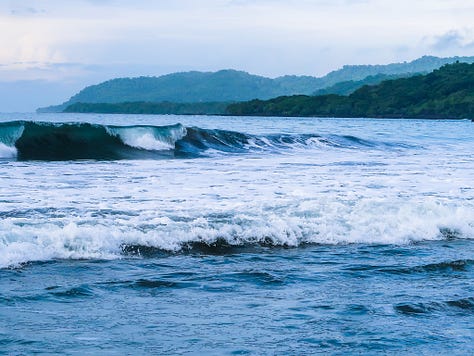
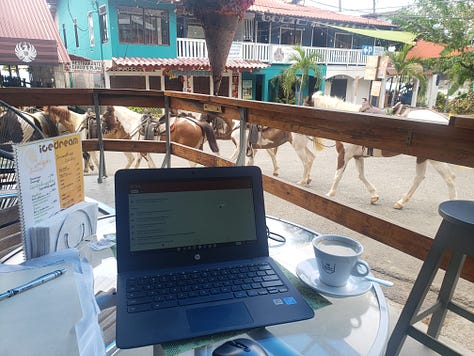
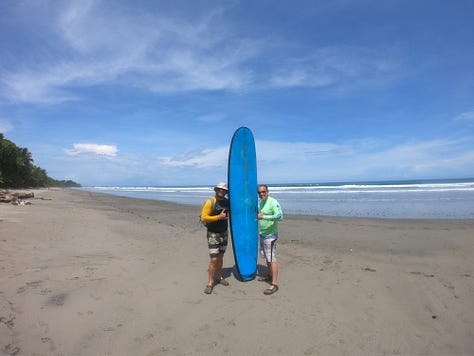
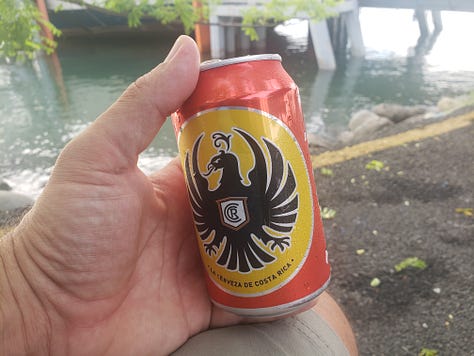
This time, I didn’t come to Montezuma just to chill. I came to learn how to surf.
Surfing just wasn’t as accessible in the ‘90s. You had to have grown up in it, or you had to hope to befriend someone who would show you the ropes. All the surfers I had met throughout Central America over the years were quite friendly, but it was always assumed my role was to sit on the beach and watch.
Things are much different nowadays. Surfing lessons are offered all over Costa Rica. I booked some sessions with Guillermo at Nicoya-Surf. After getting my ass beat on day one, I started to improve. By day two, I was more confident, and by day three, I was just enjoying the whitewater rides. I don’t have enough beach access, ambition, or wave time to ever become a “real” surfer. But for just those few days, I was living the dream, reconnecting with the 20-year-old me in 1996 who had sat on the beach wishing he could be out there.
I stayed in a cabin on a hill at Luz en el Cielo where howler monkeys chattered just outside my door and woke me up every morning. I surfed half the day and hiked the other half the day. After dark, I usually ended up back at Chico’s.
At one point, I took a taxi down to the town of Cabuya to see what was happening. But after lunch and a few beers at a restaurant, I found myself without taxi or Uber access and faced with walking a few miles back to town. It was a nice day, so I started walking, but eventually, a friendly guy on a four-wheeler picked me up and took me back to central Montezuma. I tried to give him a few bucks, but he declined, shook my hand, and sent me off with a handshake and a Pura Vida.
Returning to Montezuma wasn’t just about going back to a Central American beach town. It was a confirmation of my life and state of mind.
In my 20s, pretty much everyone told me that adventure travel was “a phase.” I was just an oddball that needed to “get it out of my system” before I got a proper 9-5.
“You won’t want to do stuff like that when you’re older,” they said. “Wait till you’re in the real world!” “Wait till you have kids!” “Wait till you have to go to work every day!” “Wait till you hit 30!” “Wait till you hit 40!” “You won’t have vacation time.”
If anything, adventure travel in my 20s awakened my real self, pushing me to my true goals and the life I was meant for. It is no coincidence that I managed to make it as a self-employed writer, determine my own future, and carve out flexibility for time off and adventures.
Nearly thirty years and dozens of countries later, I am still pursuing the adventures and experiences I dreamed about in Montezuma in 1996.





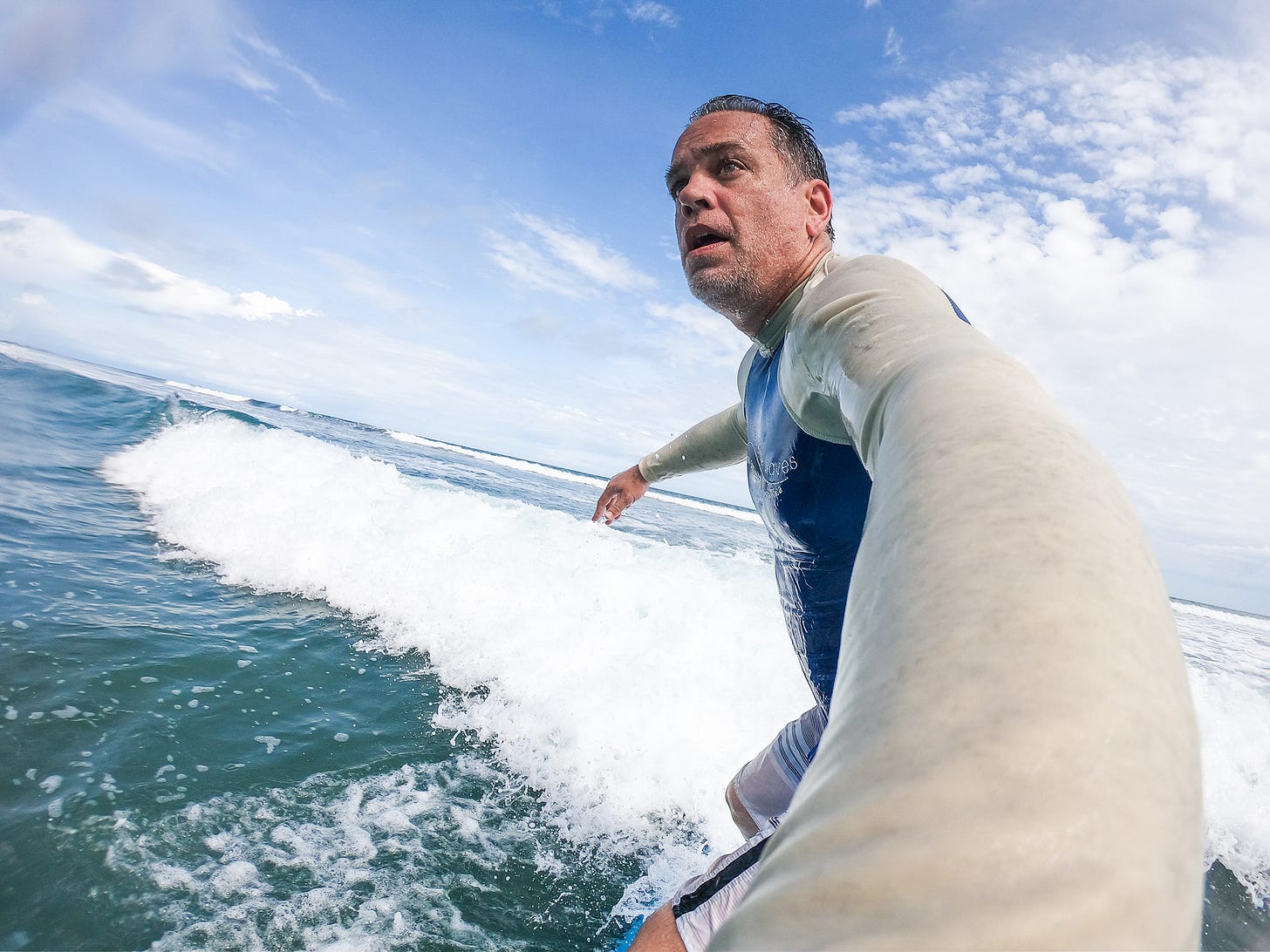
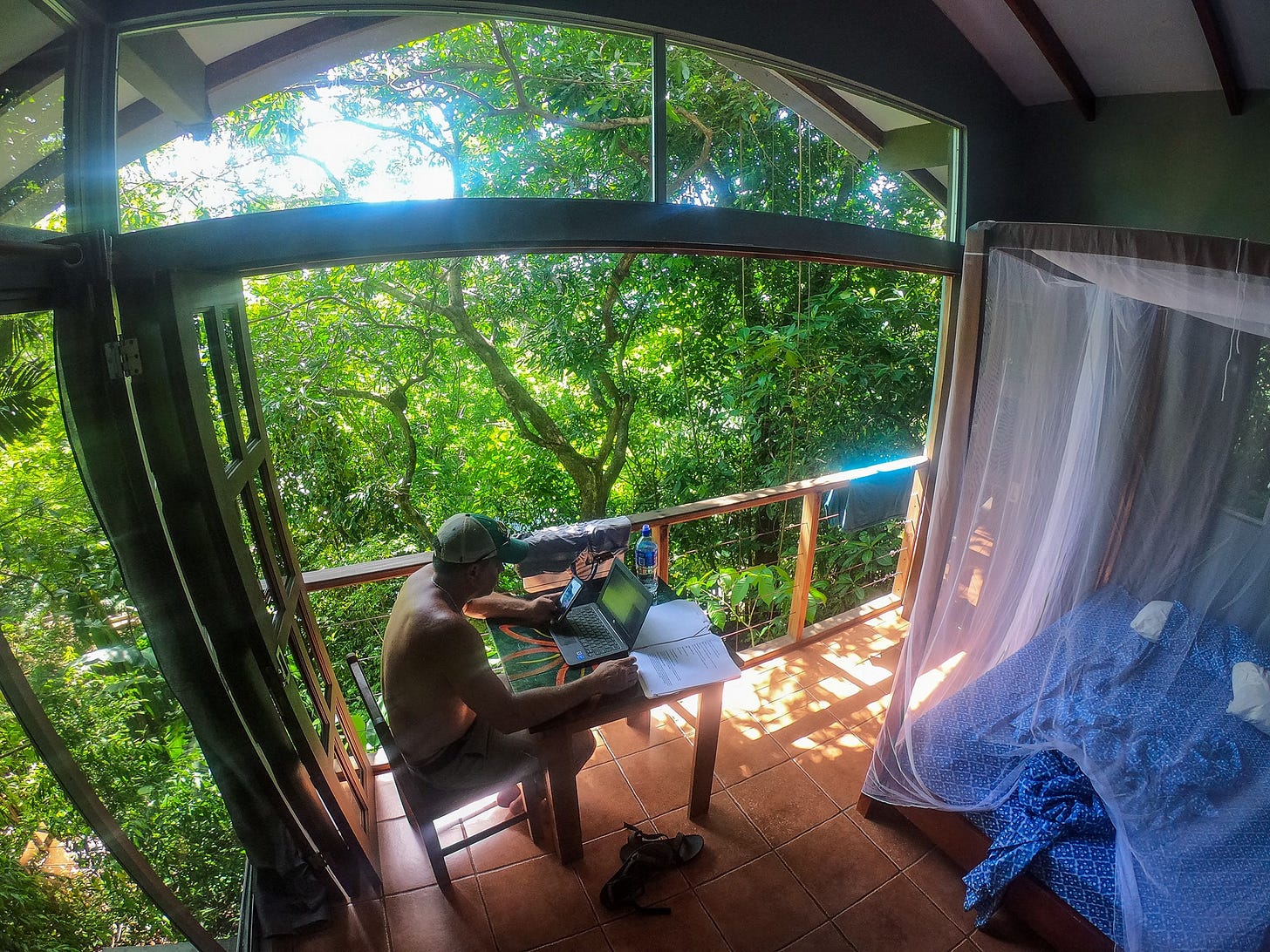
We’ve made an annual trip to Montezuma for 4 years now as we have friends down there. Cabuya is very nice too. I enjoyed reading your take on it then and now. Accurate.
How cool. Guess you can go back. Your comment about avoiding the pickpockets at San Jose bus station made me laugh. Oddly one reason we chose our pueblo decades ago bc no one there spoke English —it still seemed authentic. Well, times have changed there now.